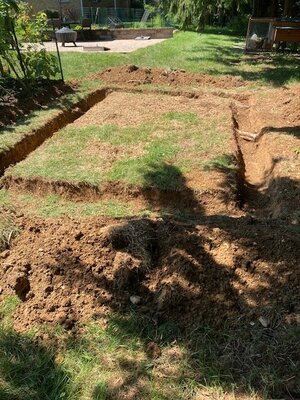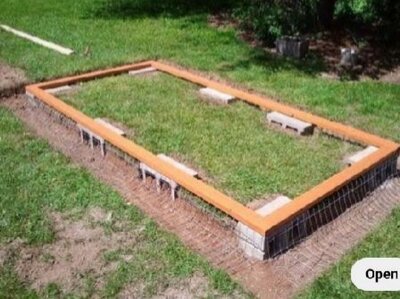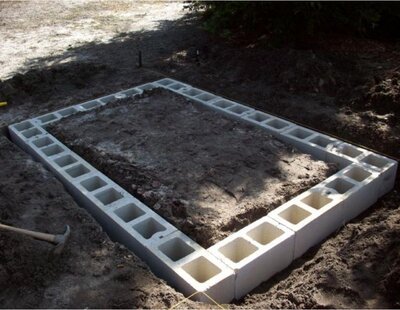katarobb
Chirping
Hello Friends! I'm just getting started on a new coop/run build for my four hens. I'm a novice builder so I'm looking for all the advice and affirmation I can get along the way. I know "chicken math" suggests I should be building for 20 but my township limits me to four and no roosters so I seriously don't see my small flock ever growing. I'm planning an 8x12 foot run with a covered roof, no floor, and hardware cloth walls. It will be approx 6 feet tall so that I can stand up inside and a 4x4 foot coop (or slightly larger) in one corner. The coop will be elevated so that the chickens can go under it. At the moment, my chickens do not free-range. I think this will be big enough for them to be comfortable.
So, it feels like getting the foundation right will be the hardest part. So far I have dug a crude trench. I ran into a few large roots that I didn't want to cut. I'm thinking that I will sit concrete blocks in the trench and attach a 2x4 (pressure treated) frame to the blocks with concrete nails. Here are my questions about next steps:
So, it feels like getting the foundation right will be the hardest part. So far I have dug a crude trench. I ran into a few large roots that I didn't want to cut. I'm thinking that I will sit concrete blocks in the trench and attach a 2x4 (pressure treated) frame to the blocks with concrete nails. Here are my questions about next steps:
- I don't know how deep the blocks should sit in the ground. Should the top of the block be below grade or should it stick up a bit when this is all finished?
- Do I need enough concrete block so that they sit right up against each other or could I get away with leaving some space (six inches or so) in between them? One on each corner, two additional on the short sides and three additional on the long sides or something like that?
- How do I go about making sure the blocks are level? I'm thinking I dig too deep and then fill back in under the blocks once I have them level. Is it ok to just fill back in with dirt that I took out of the trench? Should I be putting gravel or something different under the concrete blocks? This could get expensive fast. I hope the concrete block can go right on top of the dirt in the ground.






